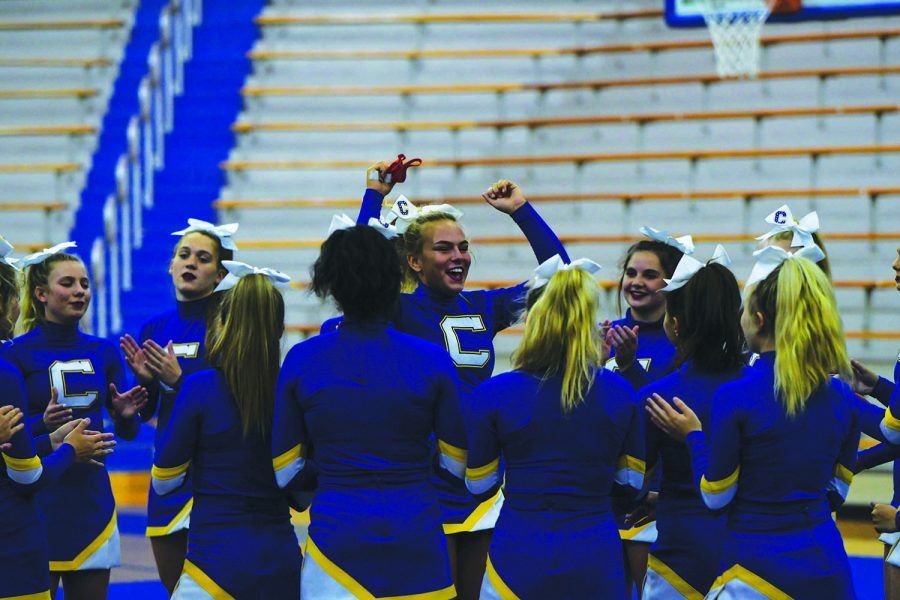Due to changes with COVID-19, many sports now follow safety precautions to limit the exposure at competitions and games and the cheerleading team at this school
is no exception. In order to continue their season, the team plans to participate in virtual competitions through video submissions.
According to Brooke Kibler, head coach of the competitive cheerleading team, the competitions are entirely virtual as the teams record a video of their routine, submit that video online and receive virtual feedback from a judge. She said this imposes challenges as judges are more critical of videos.
“We have to be practically perfect because (judges) can pause and rewind and go back and look at so many things that (the cheerleaders are) doing either right or wrong and they’re either going to get points for it or get penalized for it,” Kibler said.
In addition to judges being more critical, the absence of an audience presents challenges. For Riley Shockey, varsity cheerleader and senior, it is difficult to compete in the new virtual environment.
Shockey said, “I think it might make it a little harder, not having a crowd there because when there’s a crowd, I feel like it’s more fun. Your adrenaline is running and it just all gives to muscle memory and you aren’t really thinking.”
Similarly, Samantha “Sam” Jackson, junior varsity cheerleader and junior, said competing in the gym the entire time made performing difficult.
“I feel like it’s just hard to get into the right mindset of a real competition,” Jackson said.
Emma Olssen, varsity cheerleader and senior, said, in many ways, virtual competitions are not different from practices.
She said, “There’s not a final thing. It’s just like always practice and the practice is a competition but all you do is practice. So, there’s really no way to show it to anyone else.”
However, some cheerleaders said they see benefits with virtual competitions as they are less stressful than in-person competitions.
According to Olssen, it is beneficial to have multiple attempts to record as it allows the team to perform at its best.
Olssen said, “For virtual competitions, you can take a video as many times as you want and just submit the best one. So we’re always going to put our best video out there, (as) compared to a competition; like sometimes you can fall. Here, if you fall, you just delete it and redo it.”
Virtual competitions are also beneficial as the less stressful environment allows girls with performance anxiety to perform better.
Kibler said, “This year, those girls that might have some performance anxiety, that’s gone, because if we record a routine and we fall, you just record it again. It’s not as stressful, which is very helpful, especially during this stressful time.”
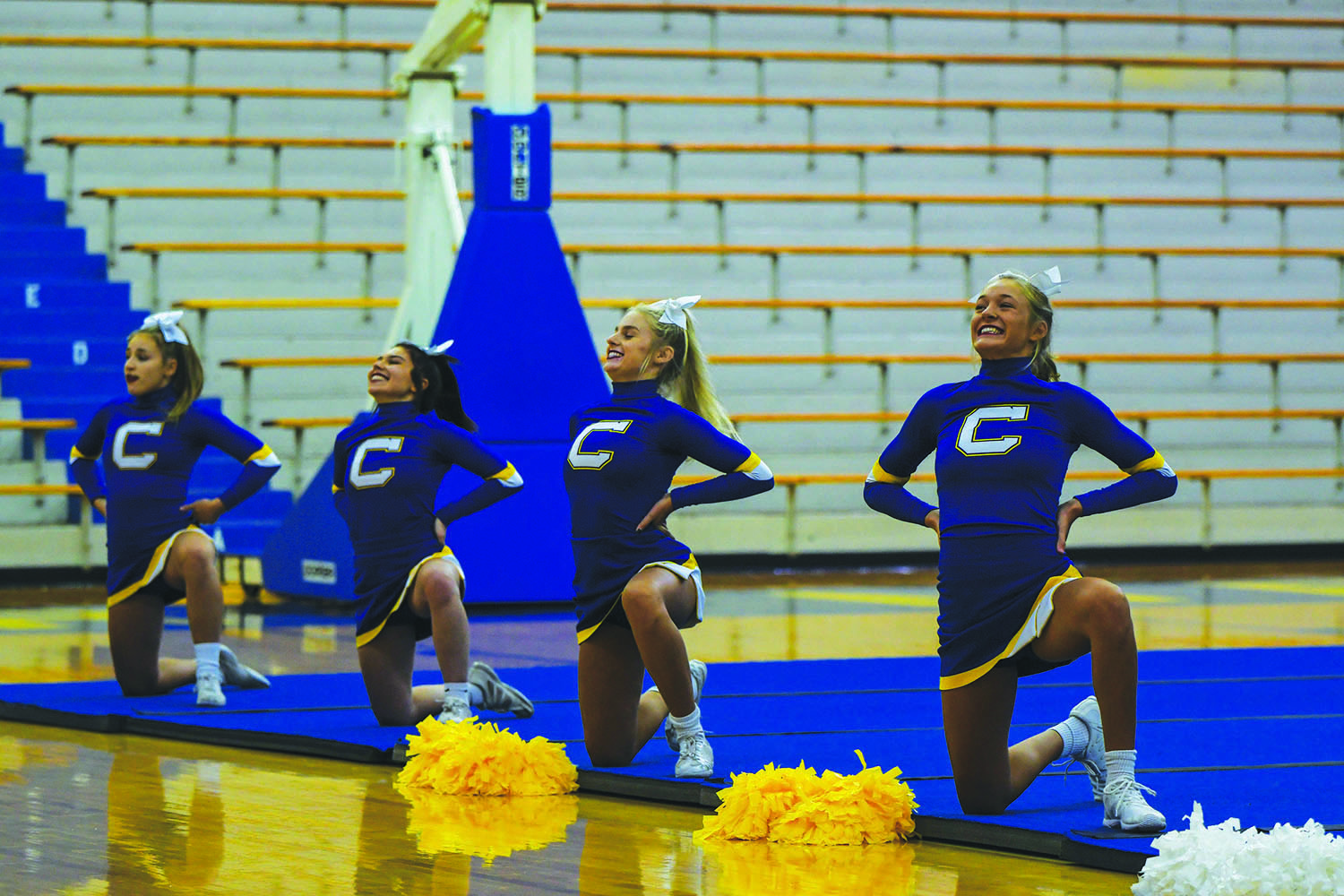
So far, competitive cheerleading is the only sport to switch to virtual competitions. Athletics Director Jim Inskeep said via email this is because competitive cheerleading follows guidelines of the Indiana Association of School Principals (IASP). All other school sports follow the IHSAA with plans to compete in person.
According to Kibler, the IASP switched to a virtual format due to the high amounts of physical contact that occur with in-person cheerleading competitions.
“It’s different (from) a football game where it’s one school and one school,” Kibler said. “In a cheerleading competition, it’s like 15 different (schools) so you’re bringing in so much more exposure.”
Along with virtual competitions, the competitive cheerleading team previously made changes in its practices to reduce exposure. This involved separating the cheerleaders into stunt groups that do not change.
Kibler said, “As far as stunt groups go, because we have to keep them in small groups and small cohorts, we can’t change anything around. So if one person gets hurt or one person tests positive (for COVID-19) or is exposed, it’s only limited to that one stunt group as opposed to the whole team being taken out.”
On the other hand, Jackson said there is a sense of togetherness as all the competitions are recorded in the gym and the team spends more time practicing together.
She said, “I don’t think it has been that bad because we still are able to spend more time together now.”
Cheerleaders like Olssen said they are glad that these changes have been made so that they still have a season.
Olssen said, “At least we have something because a lot of other states, or a lot of other high school programs, just said you can’t do anything. Like close contact, we wouldn’t be allowed to do that or any of the things that we used to do because we get too close to people. But, we’re still allowed.”
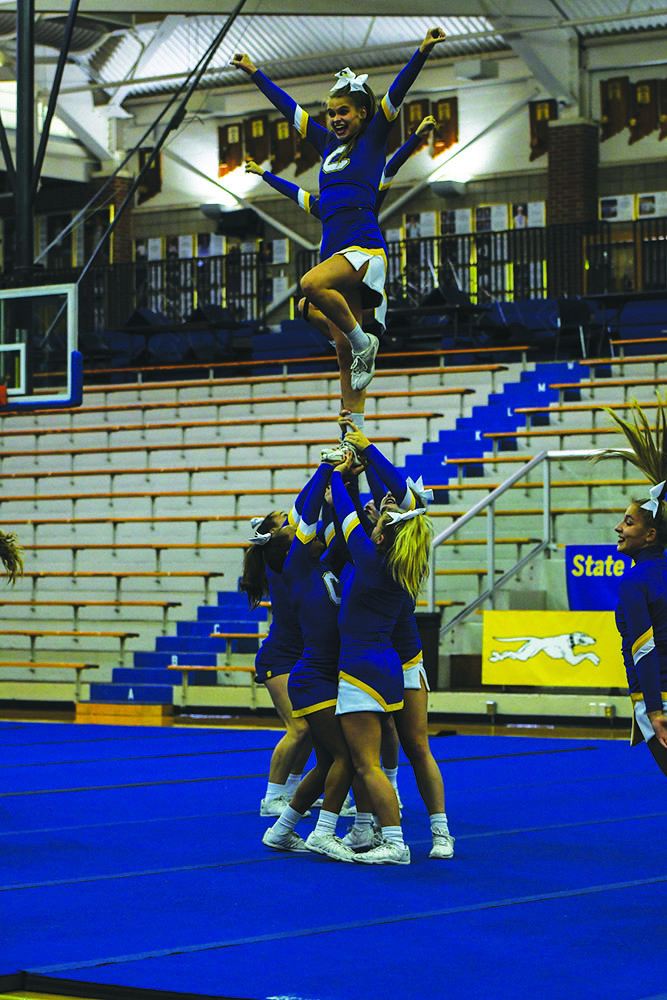
















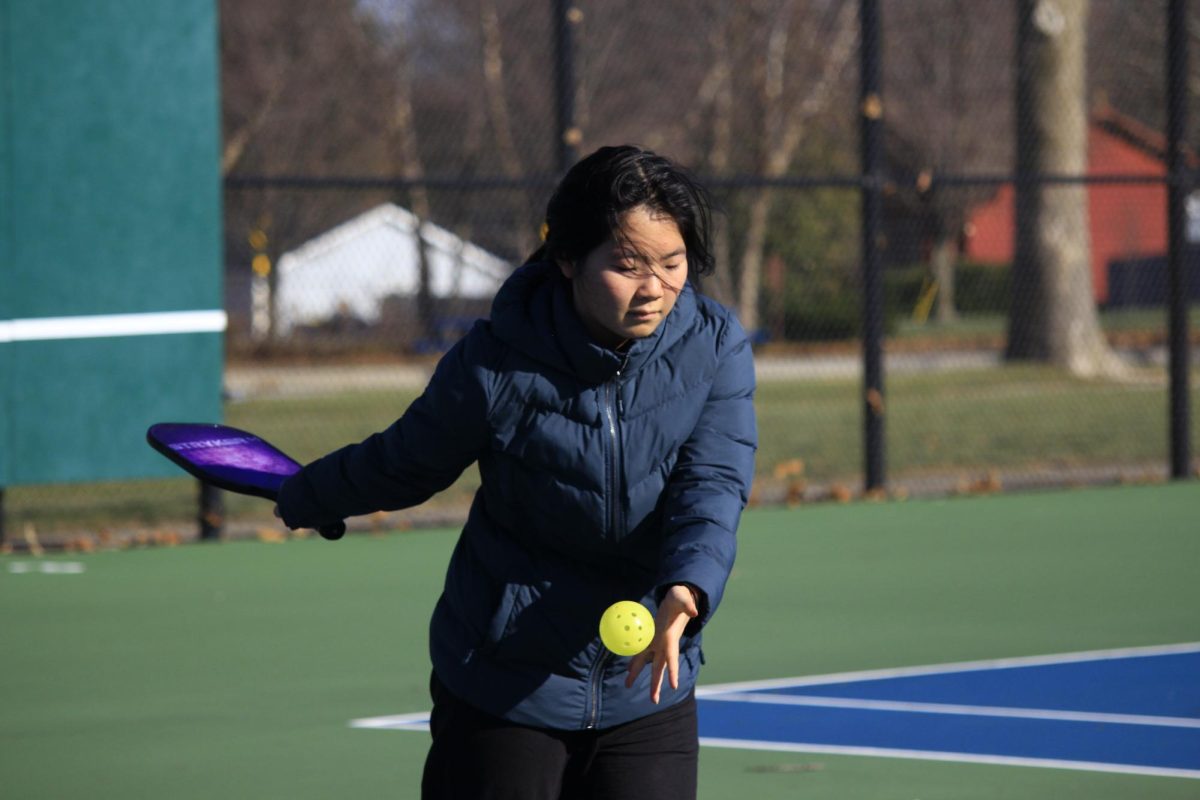




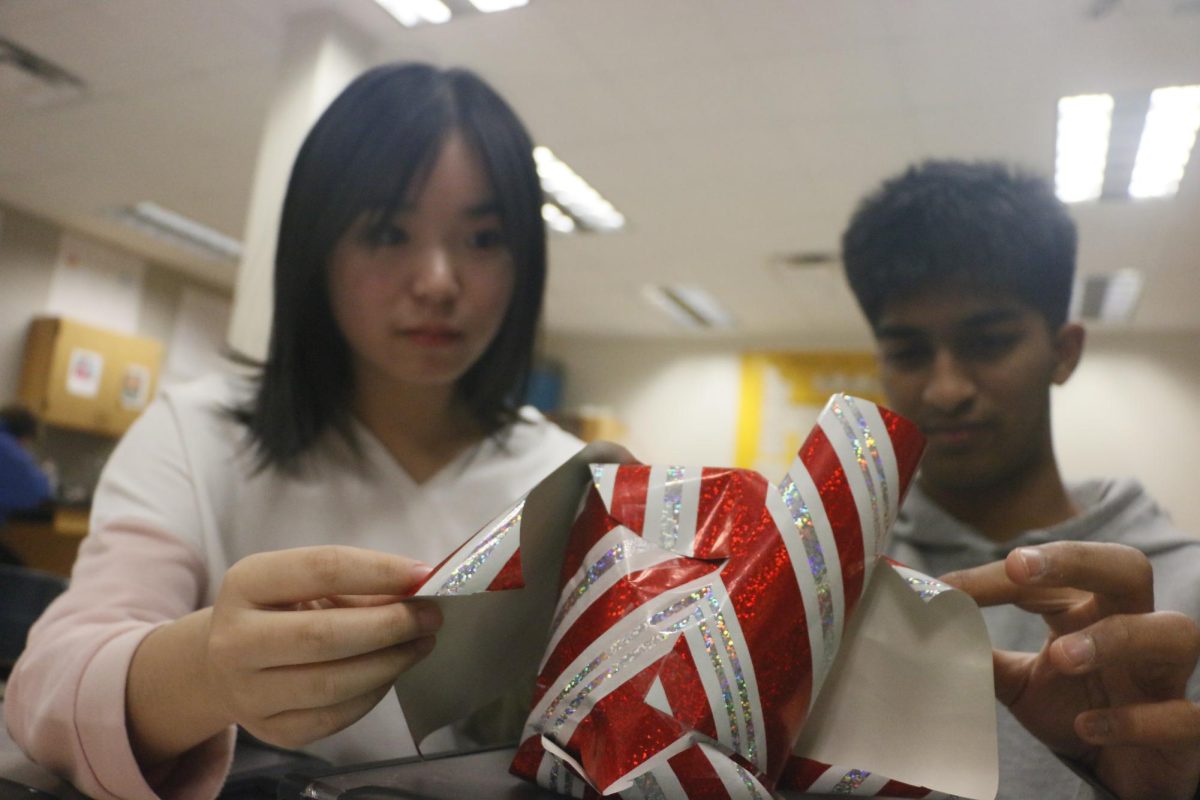







![Keep the New Gloves: Fighter Safety Is Non-Negotiable [opinion]](https://hilite.org/wp-content/uploads/2024/12/ufcglovescolumncover-1200x471.png)

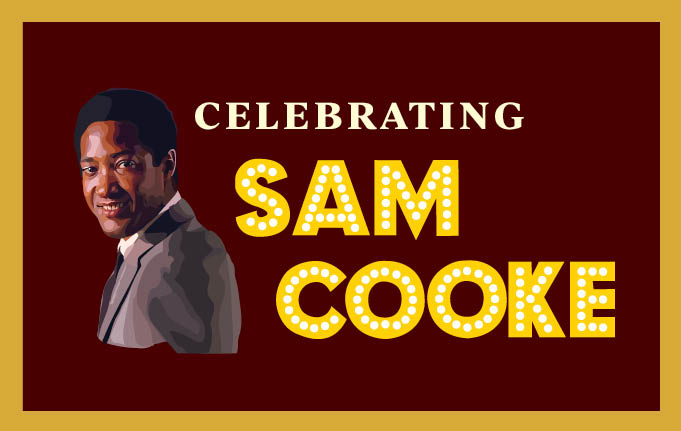














































![Video Review: Carmel BuffaLouie's [MUSE]](https://hilite.org/wp-content/uploads/2024/12/Screen-Shot-2024-12-24-at-2.08.33-PM-1200x685.png)
![Review: Dress to Impress’s Christmas update beats the Halloween update, checks all boxes [MUSE]](https://hilite.org/wp-content/uploads/2024/12/Dti-winter-update.webp)
![Review: "Moana 2": Is the storyline just as intense as advertised? [MUSE]](https://hilite.org/wp-content/uploads/2024/12/1-copy-1024x538-1.webp)
![Review: Celebrating its 15th season, “Bob’s Burgers” renders itself a fan favorite [MUSE]](https://hilite.org/wp-content/uploads/2024/12/bobs-burgers-tv.jpg)
![Review: “Family By Choice” is the perfect watch that encapsulates family, love and everything in between [MUSE]](https://hilite.org/wp-content/uploads/2024/12/family-by-choice-1.png)
![Review in Print: Maripaz Villar brings a delightfully unique style to the world of WEBTOON [MUSE]](https://hilite.org/wp-content/uploads/2023/12/maripazcover-1200x960.jpg)
![Review: “The Sword of Kaigen” is a masterpiece [MUSE]](https://hilite.org/wp-content/uploads/2023/11/Screenshot-2023-11-26-201051.png)
![Review: Gateron Oil Kings, great linear switches, okay price [MUSE]](https://hilite.org/wp-content/uploads/2023/11/Screenshot-2023-11-26-200553.png)
![Review: “A Haunting in Venice” is a significant improvement from other Agatha Christie adaptations [MUSE]](https://hilite.org/wp-content/uploads/2023/11/e7ee2938a6d422669771bce6d8088521.jpg)
![Review: A Thanksgiving story from elementary school, still just as interesting [MUSE]](https://hilite.org/wp-content/uploads/2023/11/Screenshot-2023-11-26-195514-987x1200.png)
![Review: "When I Fly Towards You", cute, uplifting youth drama [MUSE]](https://hilite.org/wp-content/uploads/2023/09/When-I-Fly-Towards-You-Chinese-drama.png)
![Postcards from Muse: Hawaii Travel Diary [MUSE]](https://hilite.org/wp-content/uploads/2023/09/My-project-1-1200x1200.jpg)
![Review: "Ladybug & Cat Noir: The Movie," departure from original show [MUSE]](https://hilite.org/wp-content/uploads/2023/09/Ladybug__Cat_Noir_-_The_Movie_poster.jpg)
![Review in Print: "Hidden Love" is the cute, uplifting drama everyone needs [MUSE]](https://hilite.org/wp-content/uploads/2023/09/hiddenlovecover-e1693597208225-1030x1200.png)
![Review in Print: "Heartstopper" is the heartwarming queer romance we all need [MUSE]](https://hilite.org/wp-content/uploads/2023/08/museheartstoppercover-1200x654.png)




